0118 Now, I recapitulate this examination.
In part one, Diesen proposes a theory of civilization based on two insights, (1) the distinction between gemeinschaft and gesellschaft and (2) the theme of civilizational cycles.
My examination adds value to Diesen’s approach by incorporating both insights into a Greimas square, as follows.
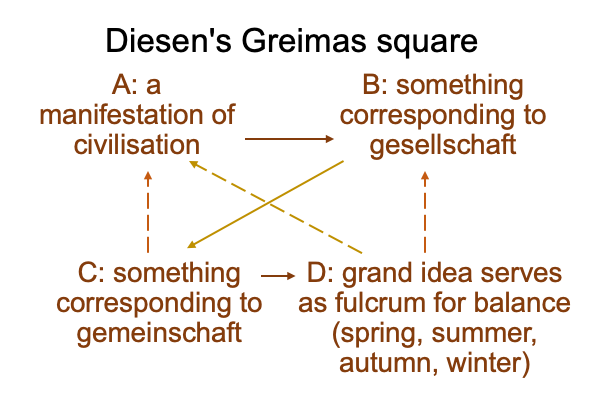
0119 In part two, Diesen describes the rise and fall of political liberalism, using all four seasons. Pluralism goes into slot A. Sovereignty occupies slot D.
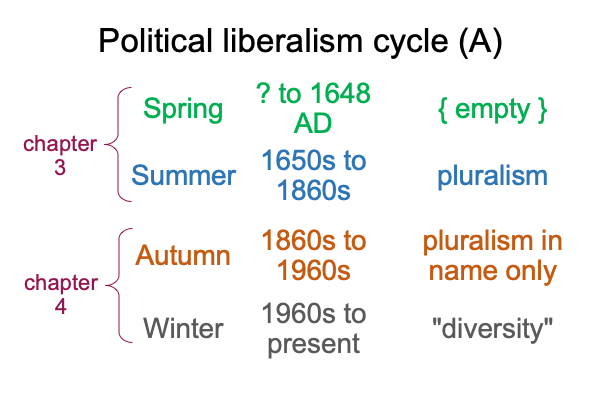
0120 In part three, Diesen throws a curve. He portrays two seasons of economic statescraft in a manner that shifts the previous frame.
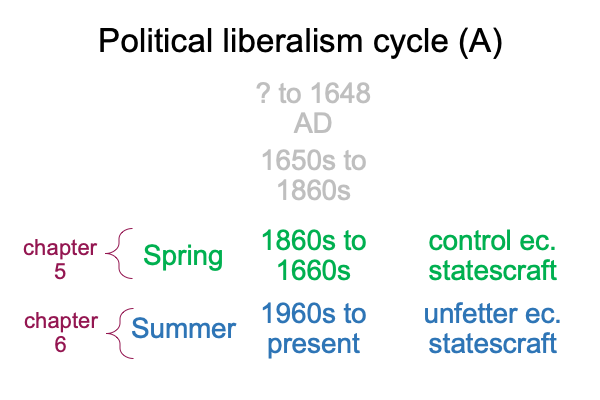
0121 Chapter five is titled, “The Rise of Western Geoeconomics as the Tool of Neo-Gesellschaft”. This corresponds to the statescraft of industrial capitalism or restrained economic statescraft (A).
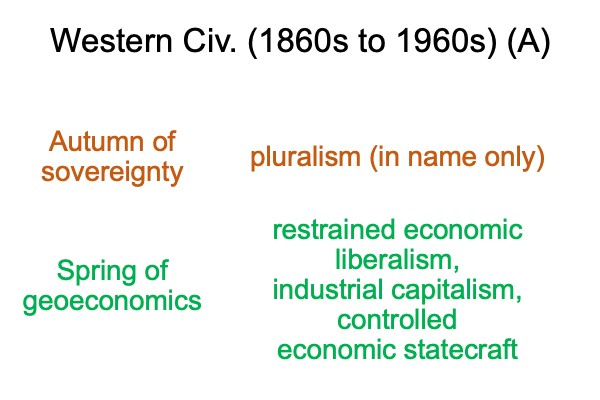
0122 Chapter six is titled, “Unconstrained Economic Liberalism: Death of Community and Society”. This may be labeled the statescraft of financial capitalism or unfettered economic statescraft (A).
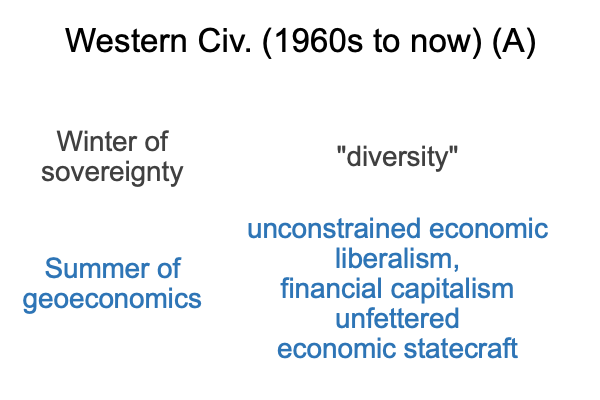
Terminology is evocative, as well as descriptive.
0122 The USA serves as the first violin, so to speak, in a two-violin concerto with the West’s opposition in the cold war among materialist ideologies.
In the summer of economic liberalism, the USA adopts an ideology of perpetual growth, where industrial and agricultural capitalism (of spring) is increasingly supplanted by financial capitalism (of summer). Diesen uses the terms, “control capitalism” and “unfettered capitalism”. The transition is completed during the presidency of Ronald Reagan. One year after his second term ends, the third Battle of the Enlightenment Gods concludes. The so-called “Cold War” ends.
